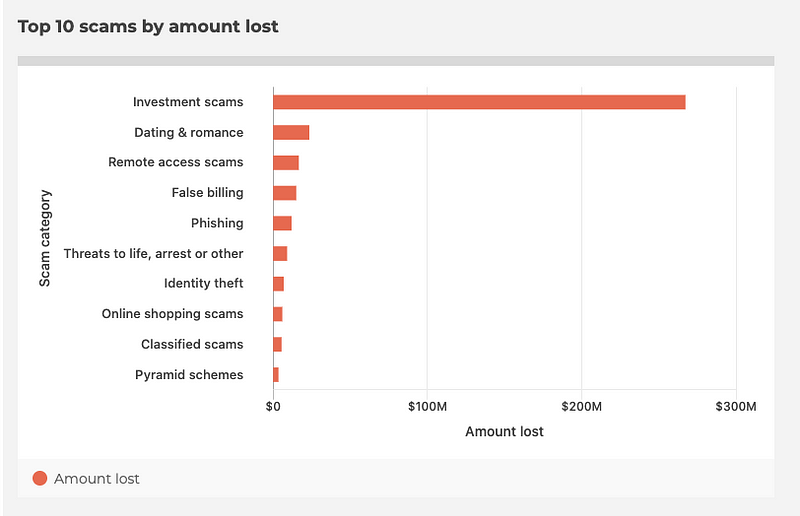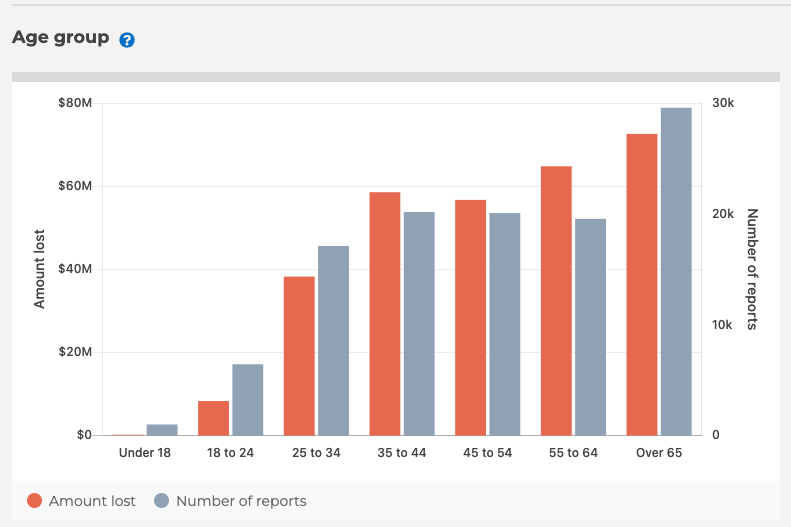Understanding the Rise of Organized Scams and Their Impact
Written on
Chapter 1: The Growing Threat of Organized Scams
Scams have evolved into a significant industry that poses a threat to society, impacting both the economy and the mental well-being of countless innocent individuals.

Purpose of this Article
This article aims to define organized scams and offer actionable strategies for combating them, drawing from credible sources. It is intended solely for informational and awareness purposes, rather than professional or health advice.
Introduction
The prevalence of scamming has escalated in recent years, particularly after 2020, likely influenced by the lifestyle changes brought about by the pandemic. As a technology professional, I frequently hear stories of individuals being victimized by scammers within my community and on social media platforms.
My inbox is inundated with spam and potential scam messages, which I consistently report. Phishing, in particular, is a pressing issue for me. Daily, I receive scam alerts from various service providers and government entities, underscoring the sharp rise in such incidents. The frequency of these alerts has significantly increased since the onset of the Covid pandemic, making scamming a common occurrence today.
This issue resonates deeply with me, as several of my elderly relatives and friends have lost their retirement savings to organized scams. While losing money is undeniably distressing, the emotional toll of being deceived can lead to severe mental health challenges, especially for older adults who may lack technological savvy.
In response to this alarming trend, I previously published articles discussing ways to maintain mental stability during these tumultuous times and expressing concern over scams, particularly in relation to YouTube advertisements. Following these articles, many readers expressed their desire for a comprehensive guide on scams, with numerous accounts of personal victimization since 2020. One reader described her experience of being scammed as feeling akin to a traumatic violation, feeling too ashamed to discuss it with loved ones.
I reassured her that she is not alone; even as a tech-savvy individual, I have also fallen victim to scams, and I plan to share my experiences in a future piece. The rise of artificial intelligence and robotics has raised concerns about online safety, as highlighted by the emergence of deep fake technologies.
While I will address my long-standing concerns regarding cybersecurity in a separate article, this post focuses specifically on organized scams and provides essential insights and tips for readers.
What Constitutes a Scam and Its Significance
At its core, a scam is a deceitful act that seeks to extract value from others without offering anything in return. Dictionaries often define scams as fraudulent schemes. It is crucial to differentiate scams from spam; while spam is annoying, it lacks the harmful intent associated with scams. To illustrate, spam is akin to a person shouting in the street, while scams are comparable to a predator with a hidden agenda.
The importance of understanding organized scams lies in their detrimental effects on both the economy and the mental health of victims, particularly the elderly demographic, which is often less familiar with technology. One of the primary catalysts for scams is the Internet, particularly social media, as previously discussed in my article "Six Tips to Filter Noise and Keep Sanity in These Enigmatic Times."
Regrettably, many established online platforms seem more focused on combating spam than on addressing scams. While they can effectively identify and ban spam accounts, organized scammers often exploit these platforms to reach large audiences through paid advertisements.
Governments and experts have noted that the escalating global scamming crisis has also given rise to fraudulent recovery services. Some companies purporting to assist scam victims are, in fact, perpetuating further scams, advertising their services through legitimate channels.
The rise of social media has contributed to a surge in identity theft, which has seen significant increases since 2020. According to the Identity Theft Research Center (ITRC), there was a staggering 68% rise in data compromises in the U.S. in 2021. Paradoxically, despite advancements in technology and heightened awareness, our data has become increasingly vulnerable. IBM Security reported that the average cost of a data breach rose from $3.86 million in 2020 to $4.24 million in 2021.
Moreover, the FBI's Internet Crime Report for 2021 indicated a 7% increase in cybercrimes compared to the previous year. It is concerning to note that 533 million Facebook records were leaked in 2021 alone. With the rise in data breaches, scams have proliferated, leaving me deeply worried about the growing prevalence of scams worldwide, including my observations in Australia and other countries where the situation may be even worse.
An Examination of Scam Statistics in Australia
In addition to analyzing overall reports and financial losses, I examined statistics from the Australian Government's Scam Watch portal, revealing troubling trends. The onset of the pandemic saw Australians lose over $851 million to scams in 2020, a record high as scammers exploited the crisis to deceive unsuspecting victims.
Investment scams ranked highest, followed by dating/romance scams, remote access scams, and false billing.

The number of reported scams has surged each year. In Australia, there were 40,891 reported scams with a total loss of $26 million in one year; by 2022, this figure had escalated to 146,776 scams costing over $381 million. It is essential to recognize that many scam incidents go unreported for various reasons.
Furthermore, just last month, we learned that losses from imposter bond investment scams had nearly tripled in the first half of 2022, with consumers losing over $20 million to these sophisticated scams. According to government reports, the primary scam techniques include phishing, false billing, online shopping fraud, identity theft, pyramid schemes, remote access scams, hacking, investment scams, dating scams, and rebate scams. Among these, phishing is the most prevalent method, while financial scams rank highest in terms of losses.
The most affected age group is those over 65, followed by individuals aged 55 to 64, while the least affected group comprises those aged 18 to 24.

Understanding Why Scammers Are Thriving
Through my review of technical literature and discussions with cybersecurity professionals, I have identified several key factors that have contributed to the empowerment of scammers:
- Exploiting Social Media: Major social media platforms are aware of cybercrime, yet scammers continue to create multiple accounts to evade detection. They utilize paid advertisements to gain wider reach, often making their schemes appear legitimate, complicating detection for service providers.
- Advancements in Technology: The growth of artificial intelligence (AI) has made it easier and cheaper to develop bots that can spam millions of users on social media platforms. Individuals can create numerous spam accounts across various networks.
- Desire for Quick Profits: The pandemic's economic impact has left many individuals searching for investment opportunities and side jobs, making them prime targets for scammers promising quick returns.
- Professionalization of Scams: Many scams, especially financial ones, are orchestrated by teams of professionals with backgrounds in finance, banking, insurance, and technology, allowing them to navigate customer management with ease.
- Impersonation of Reputable Organizations: Scammers often pose as representatives of trusted entities, such as government agencies or well-known companies, which increases the likelihood of their success.
Practical Strategies to Mitigate Scamming Risks
To combat the risk of scams, here are five actionable measures to consider:
- Public Awareness and Education: Raising awareness through education is paramount. Government portals like Scam Watch in Australia and the Federal Trade Commission in the U.S. serve as valuable resources. We must remain vigilant regarding unsolicited calls and emails, particularly those requesting personal information.
- Stricter Governance and Penalties: Governments need to enforce stricter regulations on unsolicited communications. Some European nations have made strides in this regard, but many countries still lag behind. Social media platforms also need to collaborate more effectively to combat scam-related activities.
- International Cooperation: Scamming knows no borders, necessitating cooperation among nations to detect and penalize offenders. An international organization dedicated to monitoring scams could prove invaluable.
- Utilizing Ethical Hacking: Ethical hackers can play a crucial role in addressing cybersecurity issues. Their expertise in forensic discovery can aid in preventing, mitigating, and recovering from scams.
- Support Services for Victims: While preventative measures are vital, supporting victims of scams is equally important. Governments should consider funding ethical hackers and cybersecurity specialists to assist in the recovery of lost funds, potentially creating win-win scenarios for both professionals and victims.
Key Takeaways
It is essential to educate ourselves, our loved ones, and our communities about prevalent scams. Learning from others' experiences can help us avoid similar pitfalls. Resources provided by government agencies can offer guidance for those affected by scams, including steps for recovering stolen identities, reporting scams, and seeking support services.
Every country should strive to provide similar resources to their citizens, and I encourage readers to share any links to relevant resources from their nations in the comments.
Final Thoughts
Scams not only threaten financial stability but also the mental health and well-being of countless vulnerable individuals, creating undue stress and anxiety. As noted by Simon Whaley in his article on dealing with scam phone calls, fraudsters thrive on our trust.
My work in architecture and design has often intersected with cybersecurity, and I have collaborated with many ethical hackers to share insights and strategies for combating scams. I urge readers to spread awareness to help others protect themselves from these threats.
Despite the challenges posed by scammers, it is crucial to maintain a positive outlook and take proactive measures, as highlighted in my article "Six Tips to Filter Noise and Keep Sanity in These Enigmatic Times."
Thank you for engaging with my insights. I wish you all health and happiness as you navigate these complex issues.
The first video titled "Protecting Americans' Money: Combatting Scams and Frauds Against Seniors and Savers" discusses the importance of protecting vulnerable populations from scams and offers practical advice for safeguarding finances.
The second video, "Fighting Back! A Week Inside America's Anti-Scam Call Center," provides an inside look at efforts to combat scams and the experiences of those working to protect consumers.